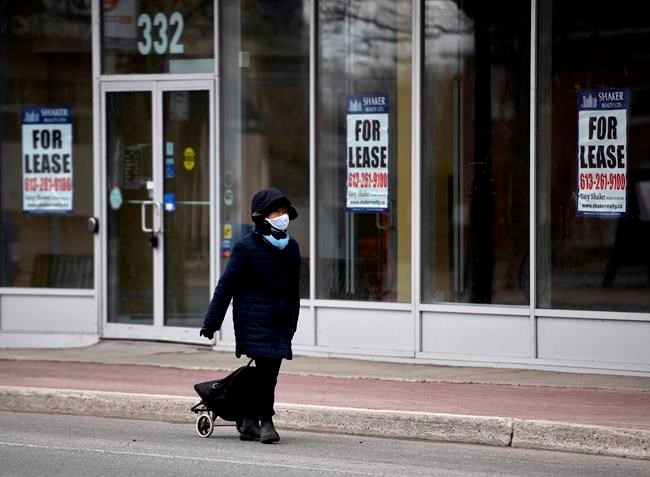Business insolvencies will likely remain elevated throughout 2024, experts said, as the economy plays catch-up after historically low levels during the pandemic.
“We did have ... so many years of artificially low filings. We've got a fair bit of catch-up to do,” said Natasha MacParland, a partner at Davies Ward Phillips & Vineberg LLP.
The pandemic saw a historically low level of insolvency filings — which include bankruptcy and restructuring procedures — as government supports kicked in but in 2023 things started to normalize, said MacParland. That trend is continuing into 2024.
Business insolvencies in 2023 were up 41.4 per cent compared with 2022, according to data from the Office of the Superintendent of Bankruptcy. Compared with 2019, they were up almost 31 per cent.
At some point in the latter half of 2023, business insolvencies started surpassing pre-pandemic, or 2019, levels. But that’s not necessarily a worrying thing, MacParland said.
“I would have been concerned if all of a sudden there was a deluge of filings. But this seems to me to be what I would have expected,” she said.
She also noted 2019 was a milder year for insolvency filings, and that a certain level of insolvencies is healthy for the economy.
Insolvency, which a business often faces when it's unable to pay its debt and other expenses, includes both bankruptcies and proposals. Bankruptcies mean the business is closing down, while a proposal offers a way to restructure.
Government support and patient lenders kept business insolvency levels low for several years, longer than industry watchers had expected, said Dina Kovacevic, editor of trade publication Insolvency Insider.
“In 2023, we saw insolvency levels starting to pick up as companies weren't able to repay their COVID loans. Lenders started getting a little more impatient,” Kovacevic said.
She agrees that the elevated numbers are a sign of normalization.
“I don't think there's any cause for concern at this point. I think the numbers that we're seeing still are not higher than what we've been expecting. If anything, they’re still lower,” she said.
“Although we've seen increases in the post-pandemic period, there still hasn't been that big bang of bankruptcies that everybody's been expecting since the pandemic hit.”
Some closing businesses may have been struggling before COVID-19, Kovacevic said, while others are likely in industries disproportionately affected by the pandemic such as retailers and restaurants.
In 2024, both MacParland and Kovacevic expect the normalization to continue, with insolvency levels likely remaining heightened compared with pre-pandemic — though of course things could change depending on how the economy fares overall.
Kovacevic added that numbers could start tapering in the later part of 2024 closer to pre-pandemic levels.
CCAA proceedings, which are similar to bankruptcy proposals but are for businesses above a certain size, also increased substantially in 2023, said Kovacevic.
January, the most recent month for which data is available, saw a year-over-year jump in business insolvencies, which more than doubled compared with January 2023. They were also more than double the numbers from January 2020 before the pandemic began.
The Canadian Federation of Independent Business said that the mid-January deadline for businesses to qualify for partial forgiveness of pandemic loans likely played a major role in driving up business insolvencies that month.
Businesses were already grappling with inflation, labour shortages, higher interest rates and weaker consumer spending, said Simon Gaudreault, the CFIB’s chief economist and vice-president of research. That deadline was likely the “straw that broke the camel’s back,” he said.
Kovacevic said there likely isn’t one single reason for the January jump, but that some businesses may have been disappointed by the holiday season.
Smaller businesses are likely driving the increased filing rates, said a report from MacParland's firm. The proportion of bankruptcies to proposals increased, indicating potentially fewer refinancing options for businesses and that smaller businesses are likely filing more than large ones.
“Sometimes it's hard to tell from the stats exactly what's going on, because you can also use proposals to liquidate. ... But it could be an indication, given interest rates, that companies aren't able to refinance on a basis that makes sense,” said MacParland.
Small businesses have less runway to restructure, said MacParland, and many don’t file at all, choosing to simply close their doors.
“They may not file, they may just close up shop,” agreed Kovacevic.
The Davies report looked at Statistics sa国际传媒 data estimating business closures, and found that the number of businesses closing per month was higher in the second half of 2023 than the first.
“This difference can indicate increased pressure faced by businesses due to prolonged periods of economic uncertainty and inflationary pressures,” said the report.
There was also a decline in business openings in November, the report noted.
This report by The Canadian Press was first published March 11, 2024.
Rosa Saba, The Canadian Press



